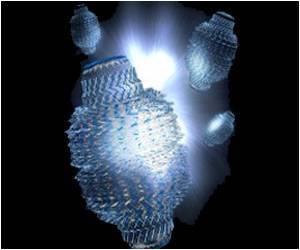An instrument created by the Purdue University researchers may help detect trace crystalline particles in drugs, finds a new study. These trace crystalline particles are known for affecting drug’s stability and bio-availability.

‘Brand new drugs that are coming out, tend to be increasingly larger more hydrophobic (they do not easily dissolve in water), but if crystallinity is detected in them, we might be able to predict that it won't dissolve in a time frame required to be bioavailable or efficacious.’





"Any light that is measured is directly proportional to how much crystallinity is in the formulation," said Casey Smith, a graduate student in Purdue's Department of Chemistry.The solid form of an active pharmaceutical ingredient can profoundly influence the proportion of that drug that can enter the body and have an effect. Many new drug candidates have a low aqueous solubility, which leads to a lower bioavailability. If a drug doesn't dissolve in a timely manner, it can pass through a body before it has had time to take effect. One method to overcome this problem is to put the drug into an amorphous state, or cast into a polymer matrix that readily dissolves in water.
"New drugs that are coming out are increasingly larger and more hydrophobic, or do not dissolve easily in water," said Garth Simpson, a Purdue, chemistry professor. "If crystallinity is detected, there's a good chance that it won't dissolve in a time frame required to be bioavailable and efficacious."
The triboluminescence instrument is designed to provide rapid screening of amorphous solid dispersions, formulations created to make drugs more efficacious. The instrument can detect crystallinity in levels as low as 140 parts per million.
The instrument was created in collaboration with the Department of Chemistry's Jonathan Amy Instrumentation Facility. It is an electro-mechanical device that uses a solenoid to strike powder on a microscope slide. A photomultiplier tube beneath the slide measures the optical radiation resulting from the triboluminescence of the compound. The light isn't visible to the naked eye. A motor moves the microscope slide down the line to probe a new area of the powder. The researchers obtained a provisional patent on the device with the help of Purdue's Office of Technology Commercialization.
Advertisement
Griffin and Smith, both students in Simpson's lab, were the lead authors in a paper on triboluminescence published in the peer-reviewed journal Analytical Chemistry that included researchers from Merck & Co.
Advertisement
"It boils down to the earliest time point which crystallinity can be detected," Simpson said. "We wanted to have something that would be a simple yes or no assessment that could be done on site. If something fails, it can be taken to a more advanced instrument to get a better sense of quantitative characterization."
Simpson said a triboluminescence instrument also could be used to determine quickly whether changes in the way a drug is produced causes crystallinity.
There is still work to be done, Simpson said. The researchers want to be able to do similar crystallinity testing in slurries and are working on a flow cell to accomplish that.
"So for a lot of these drug cocktails, when you put it into water it starts out in an amorphous state but can spontaneously crystallize. We want tools that can characterize and measure that process," he said.
The researchers also are trying to get a sense for what fraction of drug molecules and drug compounds are likely to be amenable to triboluminescence analysis.
The initial work on the said triboluminescence instrument was funded through a National Science Foundation grant. The Purdue Research Foundation provided funding for the initial prototype, and Merck has helped fund the more recent work.
The triboluminescence instrument is available for licensing from the Office of Technology and Commercialization.
Source-Eurekalert










